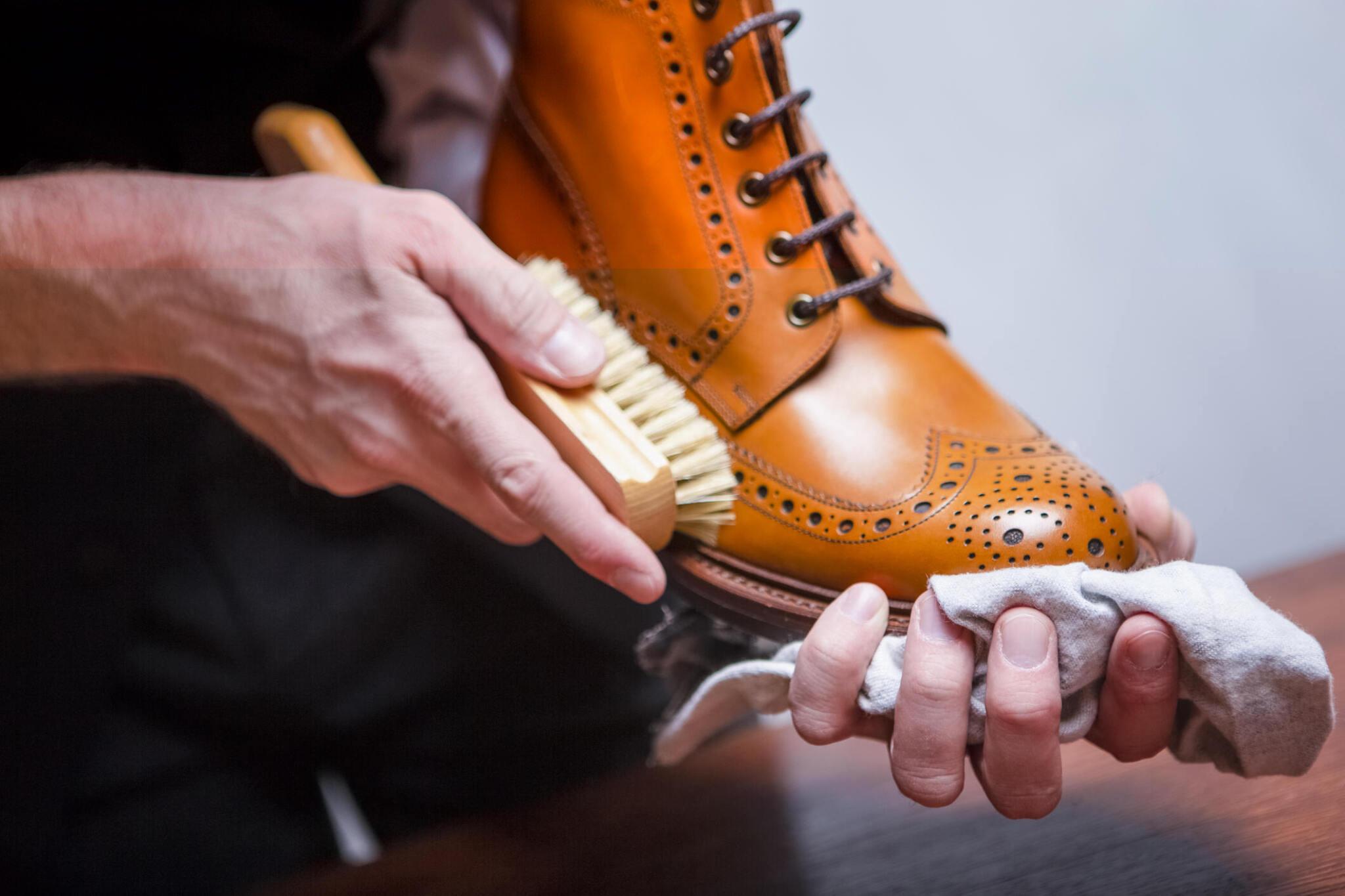Mostly people asked, how to clean a leather boot. this is a most inportent question because leather boots are not just stylish and durable, but they can also last a lifetime with proper care and maintenance. Regular cleaning and conditioning can help preserve the material and keep your boots looking their best for years to come. In this comprehensive guide, we will walk you through the step-by-step process of cleaning leather boots, along with tips for removing tough stains and maintaining their pristine condition. So, let’s dive in and learn the best way to clean leather boots.
Why Clean and Care for Leather Footwear
Cleaning and maintaining your leather boots is essential for several reasons. Firstly, it ensures hygiene by removing accumulated dirt and preventing any potential health risks. Secondly, regular cleaning helps maintain the durability of the leather by preventing dryness and cracking caused by dirt and grime. Additionally, well-maintained leather boots can enhance your overall style and professionalism, making a positive impression in both personal and professional settings. Lastly, proper cleaning and conditioning can help preserve the original color of your leather boots, keeping them looking as good as new.
Essential Tools and Materials

Before diving into the step-by-step process of cleaning leather boots, it’s crucial to ensure you have all the necessary tools and materials at your disposal.
- Soft cloth or brush
- Warm water
- Mild dish soap
- Saddle soap
- Towel
- Leather conditioner
- Boot polish (optional)
- Cotton swabs (for stain removal)
These items will not only make the cleaning process more effective but also help prolong the life of your leather footwear. These tools will help you achieve the best results while preserving the quality and appearance of your leather boots.
Now, let’s delve into the comprehensive cleaning process.
Step 1: Remove the Laces
Start by removing the laces from your boots. If they are dirty, you can either run them through the washing machine or replace them altogether. Cleaning the laces separately will ensure that no dirt or grime from the laces transfers back to your freshly cleaned boots.
Step 2: Clean Loose Dirt and Debris
To begin the cleaning process, knock your boots together a few times to remove any loose dirt and debris. This will help dislodge any particles stuck to the surface of the boots. Next, use a soft cloth or brush to gently remove any remaining dirt or grime. It’s important to clean as much dirt off the boots as possible before using water, as wet dirt can seep into the leather and cause damage.
Step 3: Apply Soap
Now it’s time to create a cleaning solution. In a small bowl, mix warm water with a few drops of mild dish soap or saddle soap. Dip a soft cloth into the soapy solution and wring out any excess water. Gently wipe down the exterior surfaces of the boots, making sure to cover all areas. The soap will help break down any stubborn dirt or stains on the leather.
Step 4: Wipe Off Soap
After applying the soapy solution, take a second clean cloth and dampen it with clean water. Use this cloth to wipe off the soap from the boots, ensuring that no residue is left behind. This step is crucial to prevent any soap buildup on the leather. Once you have wiped off the soap, use a towel to dry the boots thoroughly.
Step 5: Condition Leather
Now that your boots are clean and dry, it’s time to condition the leather. Conditioning helps restore moisture to the leather, preventing it from drying out and cracking. Apply a small amount of leather conditioner to a clean cloth and rub it into the leather using circular motions. Make sure to cover the entire surface of the boots, including the seams and creases. Let the conditioner sit on the boots for about 15 minutes to allow it to penetrate the leather. Afterward, use a clean cloth to buff the boots, removing any excess conditioner and restoring the shine.
Step 6: Dry
After conditioning, allow your boots to dry naturally in a well-ventilated area. Avoid placing them near direct heat sources or in direct sunlight, as this can cause the leather to fade or crack. It’s important to let the boots dry thoroughly before wearing them to prevent any moisture from getting trapped inside, which can lead to unpleasant odors and mold growth.
Removing Stains from Leather Boots
While regular cleaning can help prevent most stains, accidents happen. Here are some tips for removing common stains from leather boots:
Water Stains: For water stains, gently blot the area with a clean, dry cloth. If the stain persists, dampen a cloth with a mixture of water and mild soap, then blot the stain until it disappears. Make sure to dry the area thoroughly afterward.
Grease or Oil Stains: Sprinkle baking soda or cornstarch on the stain and let it sit for a few hours to absorb the oil. Once the powder has absorbed the grease, gently brush it off with a soft cloth. Repeat the process if necessary.
Ink Stains: Ink stains can be challenging to remove, especially if they have set into the leather. Wet a cotton swab with rubbing alcohol or nail polish remover and gently dab the stain. Avoid rubbing, as this can spread the ink. Continue blotting until the stain disappears, then wipe with a clean, damp cloth and dry with a towel.
Scuff Marks: To remove scuff marks, apply a small amount of non-gel toothpaste to the affected area. Gently rub the toothpaste in a circular motion with a soft cloth, then wipe it off with a clean, damp cloth. Dry the area with a towel.
Other Stains: For stubborn stains, it’s best to consult a professional leather cleaner. They have the expertise and specialized products to effectively remove tough stains without damaging the leather.
Tips to Keep Leather Boots Clean Longer
Prevention is key when it comes to keeping your leather boots clean and well-maintained. Here are some tips to help prolong the cleanliness and lifespan of your boots:
- Wipe down your boots with a soft cloth after each use to remove any surface dirt or dust.
- Avoid wearing your leather boots in muddy or wet conditions, as excessive moisture can damage the leather.
- Give your boots a break by rotating them with other pairs of shoes. This allows the leather to breathe and prevents excessive wear.
- Store your boots in a cool, dry place away from direct sunlight. Excessive heat and sun exposure can cause the leather to fade and crack.
- Invest in a good quality leather conditioner and apply it regularly to keep the leather soft and supple.
- Use a waterproofing spray or wax to protect your boots from water and stains. Apply the waterproofing agent according to the manufacturer’s instructions.
- Avoid using harsh chemicals or abrasive cleaners on your leather boots, as they can damage the leather’s finish.
- If your boots get wet, stuff them with newspaper or shoe trees to help them retain their shape and absorb excess moisture.
Additional Tips for Leather Boot Care
In addition to regular cleaning and maintenance, here are a few extra tips to keep your leather boots in top condition:
- Avoid excessive heat exposure: Do not dry your boots near a heater or use a hairdryer on them. Excessive heat can cause the leather to warp or crack.
- Invest in a shoe horn: Using a shoe horn when putting on your boots can help prevent the back of the shoe from getting crushed or deformed.
- Polish regularly: Use a high-quality boot polish to enhance the shine and color of your leather boots. Apply a small amount of polish with a soft cloth and buff gently for a polished finish.
- Avoid excessive moisture: If your boots get wet, wipe off any excess moisture with a towel and allow them to air dry naturally. Avoid using direct heat sources as this can damage the leather.
- Protect against salt damage: During winter months, protect your boots from salt stains by applying a layer of waterproofing spray or wax before wearing them outside.
Know when to seek professional help: If you are unsure about cleaning or treating a specific stain or issue, it’s best to consult a professional leather cleaner or cobbler. They have the expertise and tools to handle more complex cleaning and repair tasks.
Cleaning and caring for your leather boots is a simple yet important process that can greatly extend their lifespan and keep them looking their best. By following the step-by-step guide outlined in this article, you can effectively clean your leather boots, remove stains, and maintain their overall condition. Remember to regularly clean, condition, and protect your boots to ensure their longevity and enjoy them for years to come. With proper care, your leather boots will continue to make a stylish statement while providing the durability and comfort you desire.
FAQs
Cleaning and caring for leather boots is essential to maintain their hygiene, durability, appearance, and longevity. Proper care can prevent damage, preserve the original color, and enhance your style.
The cleaning process begins by removing the laces and knocking off loose dirt and debris. It’s important to clean as much dirt off as possible before using water to prevent damage.
Mix warm water with a few drops of mild dish soap or saddle soap in a small bowl. Dip a soft cloth into the soapy solution and gently wipe down the exterior surfaces of the boots.
After applying the soapy solution, use a second clean cloth dampened with clean water to wipe off the soap. Ensure no residue is left behind, and then use a towel to dry the boots thoroughly.
Conditioning leather helps prevent drying and cracking. Apply a small amount of leather conditioner to a clean cloth and rub it into the leather using circular motions. Let it sit for about 15 minutes and then buff the boots with a clean cloth
Allow the boots to dry naturally in a well-ventilated area, avoiding direct heat sources or sunlight to prevent fading and cracking
To prevent stains, wipe your boots after each use, avoid wearing them in muddy or wet conditions, rotate them with other shoes, store them in a cool, dry place, use a waterproofing agent, and avoid harsh chemicals.
Additional tips include avoiding excessive heat exposure, using a shoe horn, regular polishing, preventing excessive moisture, protecting against salt damage, and seeking professional help when needed.








